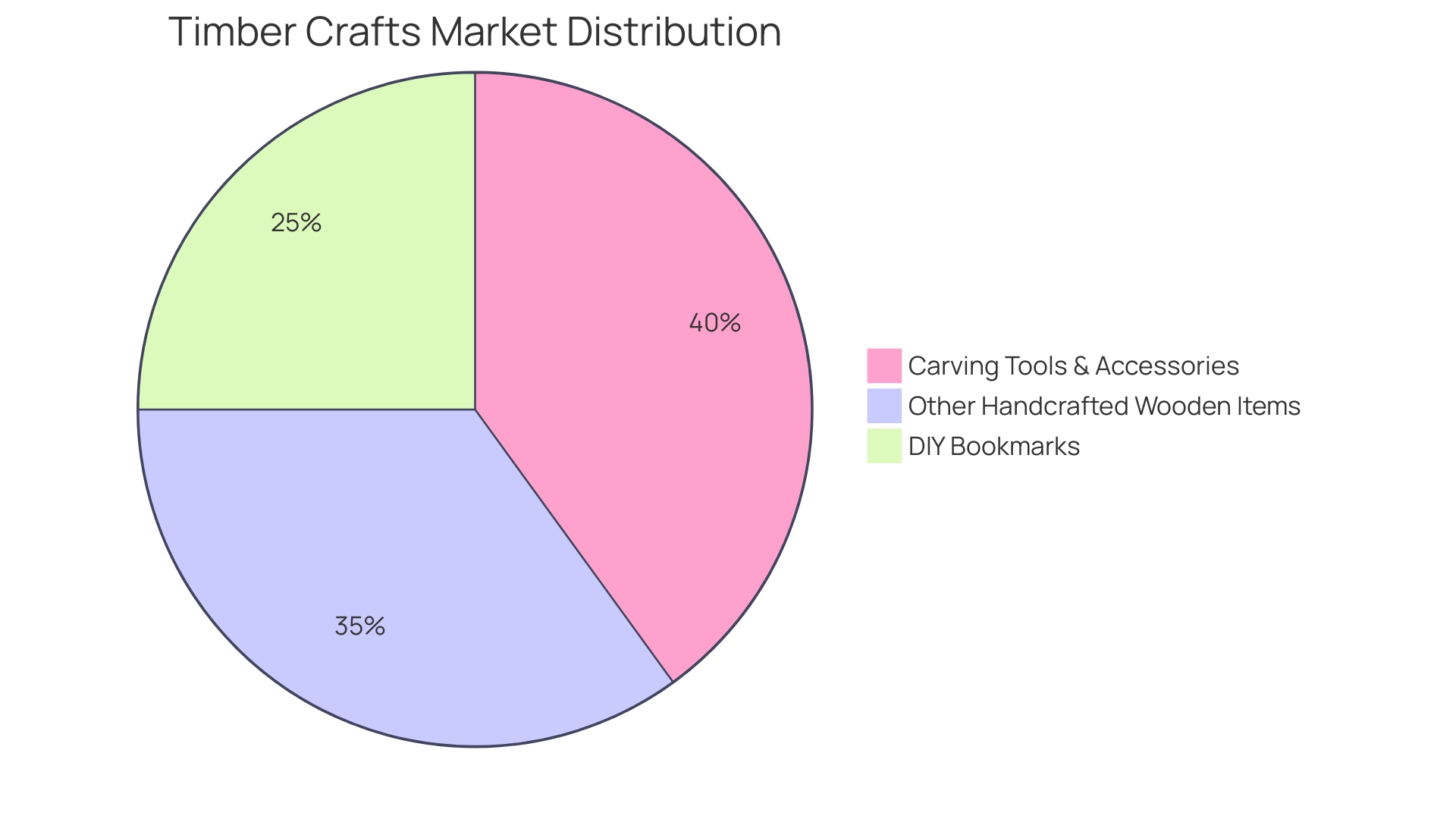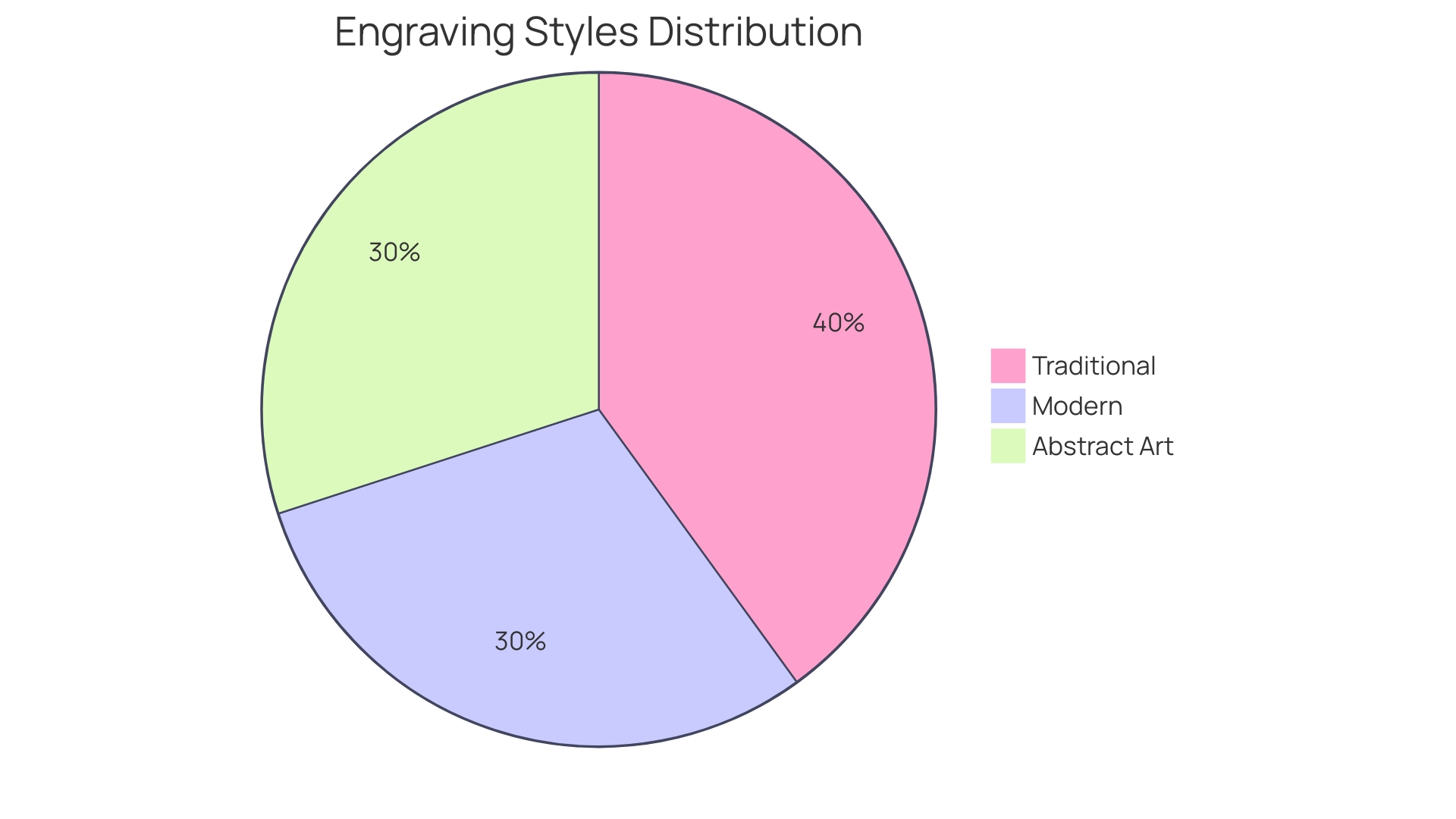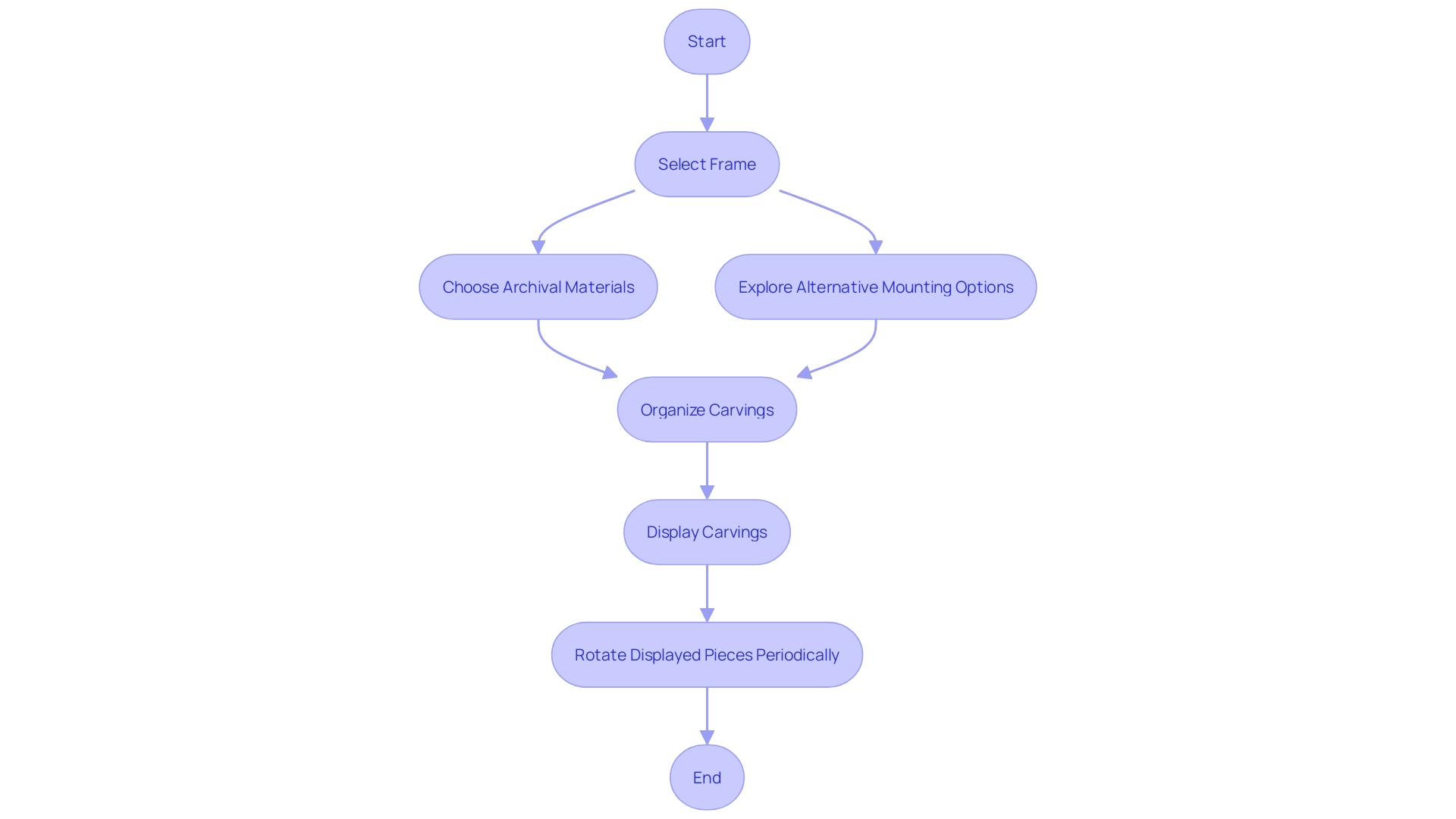Introduction
The art of wood engraving has a timeless allure that continues to captivate artists and craft enthusiasts alike. It offers a unique opportunity to transform a simple piece of wood into a stunning, personalized work of art. Whether you're a seasoned artist or just starting out, the process of wood engraving allows you to unleash your creativity and create truly bespoke items.
In this article, we will explore the process of wood engraving, the tools and materials you'll need, step-by-step guidance to create wood engravings, tips for achieving high-quality prints, and how to frame and display your wood engravings. So, let's dive into the world of wood engraving and discover the joys of this ancient craft.
Understanding the Process of Wood Engravings
The art of engraving on timber is an ancient practice that continues to captivate artists and craft enthusiasts alike. It's a form of expression that allows you to transform a simple material into a stunning, personalized work of art. To begin this artistic adventure, you'll first have to transfer your selected pattern onto the woodblock. This crucial stage can be accomplished using different approaches, like the conventional method of shading the rear of your artwork with charcoal or chalk, then copying it to leave an imprint of the design. Alternatively, drawing inspiration from the Ukiyo-e artists of Japan, you could paste an ink drawing onto the block and carve through the paper, or simply sketch directly on the woodblock itself.
As you explore the realm of timber etching, you'll be treading the path of numerous craftsmen who came before you, from the Basque sheepherders who etched their histories into aspen trees to the contemporary pioneers like the team at Factum Arte, who have utilized technology to record the intricate particulars of etched surfaces with unparalleled accuracy.
Moreover, utilizing timber carving presents a distinct chance to craft genuinely customized objects, like homemade bookmarks, which not only bring an individualized element to your reading journey but also provide an outlet for your artistic abilities. The process of crafting something by hand is not only fulfilling but also a testament to one's own creativity and skill—a sentiment echoed in the words of printmakers who share their expertise in the field.
The resurgence of interest in traditional arts, coupled with the integration of digital technologies, has redefined the boundaries of the art market. As artists and collectors alike navigate this new landscape, the ageless tradition of wooden carving serves as a connection between the lasting charm of handmade artistry and the ever-changing possibilities of the digital era.
Tools and Materials for Wood Engraving
Starting a engraving project provides the chance to make something truly special and personal. To begin, choose a premium timber block, such as basswood or cherry, acknowledged for their fine grains and suitability for detailed work. Your toolkit should include an array of chisels and gouges, each offering different shapes and sizes to carve out your vision with precision. For design transfer, consider the traditional charcoal backing method, which allows for clear, replicable outlines, or the historical Japanese Ukiyo-e technique of carving through a pasted ink drawing on the block. Sandpaper will be your ally in creating a smooth canvas on the surface. And above all, prioritize safety with gloves and goggles to protect against any mishaps.
In the realm of timber crafts, innovation meets tradition; from historic printing presses in India that laid the groundwork for publishing, to contemporary DIY bookmarks that add a personalized touch to your reading experience. The market for handcrafted timber products is constantly growing, with prizes and trade show demonstrations showcasing the latest in carving tools and accessories, like the renowned Task Lighting Kit, ideal for illuminating intricate work in your workshop.
Charles H. Hayward, a luminary in the field, once articulated the essence of the craft and its significance. He emphasized the importance of creating a workspace that resonates with the artisan, equipped with tools that are not just functional but feel like an extension of one's own hands. As you delve into the world of woodcraft, you too may find that with a well-organized bench, good lighting, and a collection of hand tools, the possibilities are endless. You may opt for machine assistance for more labor-intensive tasks, but the heart of the craft lies in the personal touch of hand tools.
The resilience of the contemporary art market, as reported by Artprice in 2023, echoes this sentiment. With an astonishing growth of 2200% since 2000, it's evident that art and craftsmanship continue to be highly valued, with handcrafted wooden items standing as a testament to both beauty and investment potential. Whether you're creating for pleasure or contemplating a woodcraft business, the fusion of artistry and utility can result in creations that are cherished for generations.

Step-by-Step Guide to Creating Wood Engravings
Discover the joy of custom wood engraving by diving into the creative process. Your initial action is to choose a distinctive pattern, which could vary from basic patterns to intricate imagery. Bear in mind, the more complex the pattern, the longer and more skillful it takes, but also the more customized your creation. Next, it's time to transfer your selected pattern onto the wood. This can be done by shading the back of your sketch with charcoal or chalk, tracing over it to leave an imprint, or by the traditional Ukiyo-e method of pasting the drawing onto the block and carving through the paper. Keep in mind that, as once practiced by Basque sheepherders in the American West, your carvings could tell a story for generations to come.
Start the carving process by carefully etching the outline of the artwork. This stage requires patience and a steady hand, but as you work, you're not just creating art, you're engaging in a practice that has been at the forefront of technology for centuries. As you add details and textures, you're participating in a historic tradition of printmaking where each tool stroke adds to your work's uniqueness. Through this method, you can explore an unlimited range of artistic expressions, just as printmakers have done throughout history.
Once your design is fully carved, refine and smooth the surface with sandpaper. This crucial step eliminates imperfections, ensuring that your artwork is flawless. Finally, apply a protective finish like varnish or wax, which not only preserves your work but also highlights the material's natural beauty.
Proudly display your finished piece, knowing that you've created a work of art that resonates with the spirit of innovation and the timeless allure of printmaking. Whether it becomes a focal point in your home or a cherished gift, your engraved masterpiece is a testament to creativity and the enduring appeal of handcrafted timber products.

Designing Customized Masterpieces
Personalized engraving taps into the heart of creativity, allowing for endless avenues to craft customized and unique items that resonate on a personal level. To design truly remarkable pieces, consider these insights:
- Personal touch is key: Engraving initials, names, or significant dates can transform a simple piece into a treasure with profound sentimental value. These personal elements are not just markings; they're stories etched in wood. Explore different styles in the world of etching. Whether it's the classic charm of traditional designs, the sleek appeal of modern aesthetics, or the imaginative flair of abstract art, finding your signature style can set your work apart.
- Draw inspiration from everywhere: For those new to the craft, reference images can spark imagination and guide your hand. Take a cue from Ayame's custom shoe service, which crafts perfectly fitting shoes from 3D scans, merging technology with tradition.
- The surface is important: Embrace the natural grain and texture of the material to enhance depth and character in your artwork. As the wooden desk lamp project demonstrates, the fusion of oak and alder, along with the wood's inherent beauty, can elevate a simple lamp to an animated, color-changing centerpiece.
- Collaboration creates masterpieces: When offering custom services, work closely with clients to bring their visions to life. Similar to how a watch can have a discreet message etched on the back of the case, your personalized inscriptions can hold the same level of significance.
In the realm of woodworking, where the market is eager for handcrafted, one-of-a-kind items, these personalized touches not only fulfill creative aspirations but also cater to the ever-growing demand for custom-made products. With platforms like Etsy drawing over 500 million visitors monthly and generating billions in revenue, the potential for woodworkers to thrive is substantial. By leveraging personalization, diverse styles, and collaborative efforts, your engraved creations can stand out in a marketplace that celebrates uniqueness and artistry.

Tips for Achieving High-Quality Prints
Wood carving is not only a form of art; it is a journey into precision and creativity. Let's dive into the nuances of producing top-notch engraved pieces that are not just visually appealing, but also rich in history and personal value. To start with, the art of engraving requires a meticulous eye for detail. Every stroke of your tool should be deliberate, aiming to create clean, crisp lines that will render beautifully in the final print. Remember, your wooden canvas tells a story, much like the Viking Age cross shaft that was transformed into a 3D model and later into an object biography through careful study and photogrammetry.
When it comes to the tools of the trade, don't shy away from testing them on a spare material. This ensures they're sharp and ready to carve out your vision. And speaking of wood, each type has its own character. Some might whisper the tales of Indian Jesuit priests from the 1550s using a press in Goa, while others might resonate with the echoes of the British administrative towns' presses from the 1800s. Experimentation is key to finding the perfect match for your project.
As we progress to the act of carving, pressure control becomes your greatest ally. It's not just about the depth of the cut but the texture and feel it imparts. The varying pressures can mimic the ruggedness of the Viking ‘hogback’ grave-markers or the finesse of fine print editions.
Don't forget to play with different inks and papers too. As highlighted by Jane in her exploration of linocut printing, the right combination can elevate your artwork. Whether it's a simple kit you've started with or the elaborate presses that can cost a fortune, what matters is the interaction of these elements to produce something unique.
Lastly, the storage of your masterpieces is as crucial as their creation. A cool, dry location can maintain the quality of your etchings, similar to how the Viking-Age stone sculptures were conserved beneath the chancel before their rediscovery.
Incorporate these insights into your practice, and watch as your wooden prints become not just prints, but a testament to history, craftsmanship, and personal expression.
Framing and Displaying Wood Engravings
- Select a frame that mirrors the essence of your artwork. For wooden carvings, consider a frame that harmonizes with the piece's organic aesthetic. A rustic wooden frame might be perfect for a nature-themed decoration, while a sleek metallic one could enhance a modern design.
- Safeguard your wooden carvings with mats that are free of acid and glass that resists UV rays. These archival materials are crucial in preserving the integrity of your artwork against the harmful effects of moisture and sunlight.
- Explore alternative mounting options for a contemporary display. Acrylic or metal panels can give your wooden carvings a distinctive and contemporary display that is noticeable.
- Organize your wooden etchings to demand notice. Place them strategically to draw the eye and create a visually appealing focal point within your space.
- Regularly rotate your displayed wood engravings to avoid overexposure to light, which can cause fading and deteriorate the quality of your artwork over time.

Conclusion
Wood engraving is a captivating art form that allows you to transform wood into personalized works of art. By following a step-by-step process, you can create flawless engravings that showcase your creativity and skill. Personalization is key, whether it's adding initials or significant dates.
Exploring different styles and drawing inspiration from various sources can help you find your unique signature. Attention to detail is crucial for high-quality prints, from testing tools to experimenting with materials. Proper storage preserves the quality of engravings over time.
When framing and displaying engravings, choose a frame that complements the aesthetic and use archival materials for protection. Wood engraving offers a thriving market for handcrafted, personalized items. By incorporating personalization, diverse styles, and collaboration, your engravings can stand out in a marketplace that values uniqueness.
Embrace the timeless allure of wood engraving and unleash your creativity to create remarkable pieces that will be cherished for generations.
Explore the world of wood engraving and create your own personalized masterpieces today!




